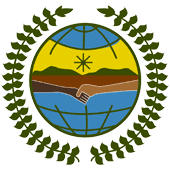 The UN Permanent Forum of Indigenous Peoples‘ (UNPFII) mandate is to provide advice and recommendations on Indigenous issues to the Council, to produce and disseminate information related to Indigenous issues. The Permanent Forum was created in response to feelings that the structure of the United Nations was not organized to response to issues related to Indigenous peoples and that Indigenous peoples’ representation was limited. The Permanent Forum was established with the framework of the UN International Decade of the World’s Indigenous Peoples (1995 – 2004).
The UN Permanent Forum of Indigenous Peoples‘ (UNPFII) mandate is to provide advice and recommendations on Indigenous issues to the Council, to produce and disseminate information related to Indigenous issues. The Permanent Forum was created in response to feelings that the structure of the United Nations was not organized to response to issues related to Indigenous peoples and that Indigenous peoples’ representation was limited. The Permanent Forum was established with the framework of the UN International Decade of the World’s Indigenous Peoples (1995 – 2004).
Members serve a three year term and include sixteen independent experts, eight nominated by governments and eight directly by Indigenous organizations in their regions. Regions include: Africa, Asia, Central and South America and the Caribbean, the Artic, Central and Eastern Europe, Russian Federation, Central Asia and Transcaucasia, North America, and the Pacific.
Links include:
Indigenous Women and the UN System
Indigenous women and the UNPFII
Inter-Agency Task Force on Indigenous Women
Convention on the Elimination of all Forms of Discrimination Against Women CEDAW
Second Meeting of UN Agencies and Indigenous Women representatives of Central America and Mexico
Declaration from the Indigenuos Children and Adolescents of Latin America to the 2005 Ibero-American Summit Meeting and press release
UNPFII logo image, Retrieved Nov. 17 from UNPFII website. http://www.un.org/esa/socdev/unpfii/
